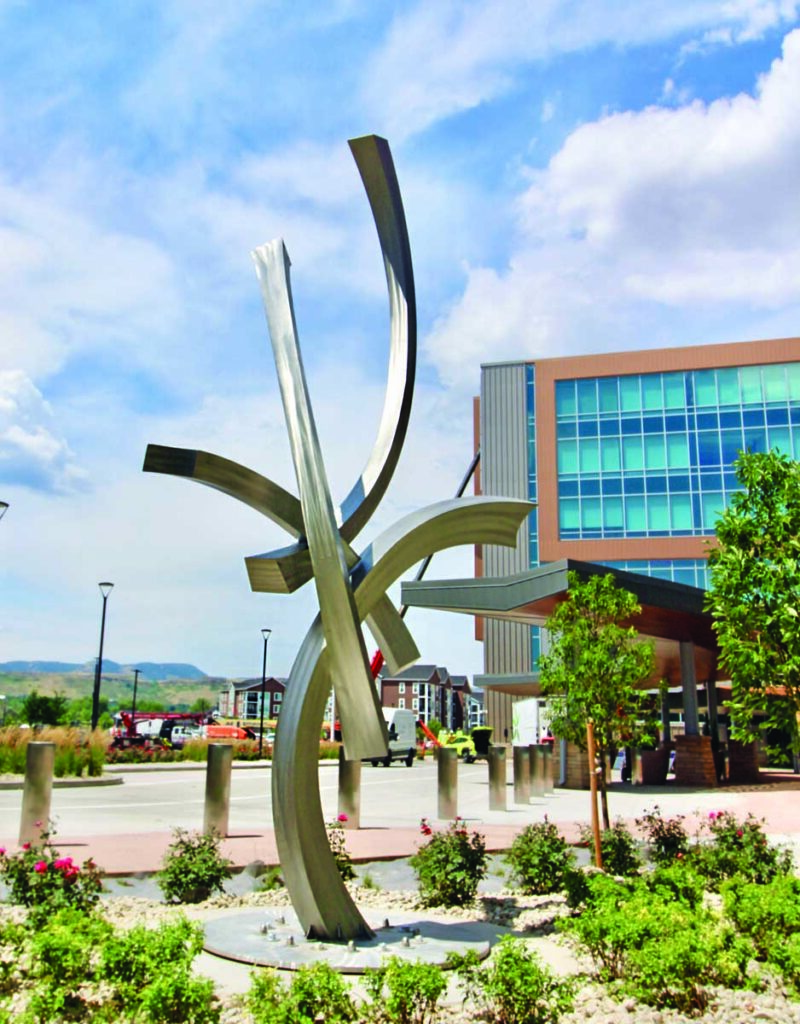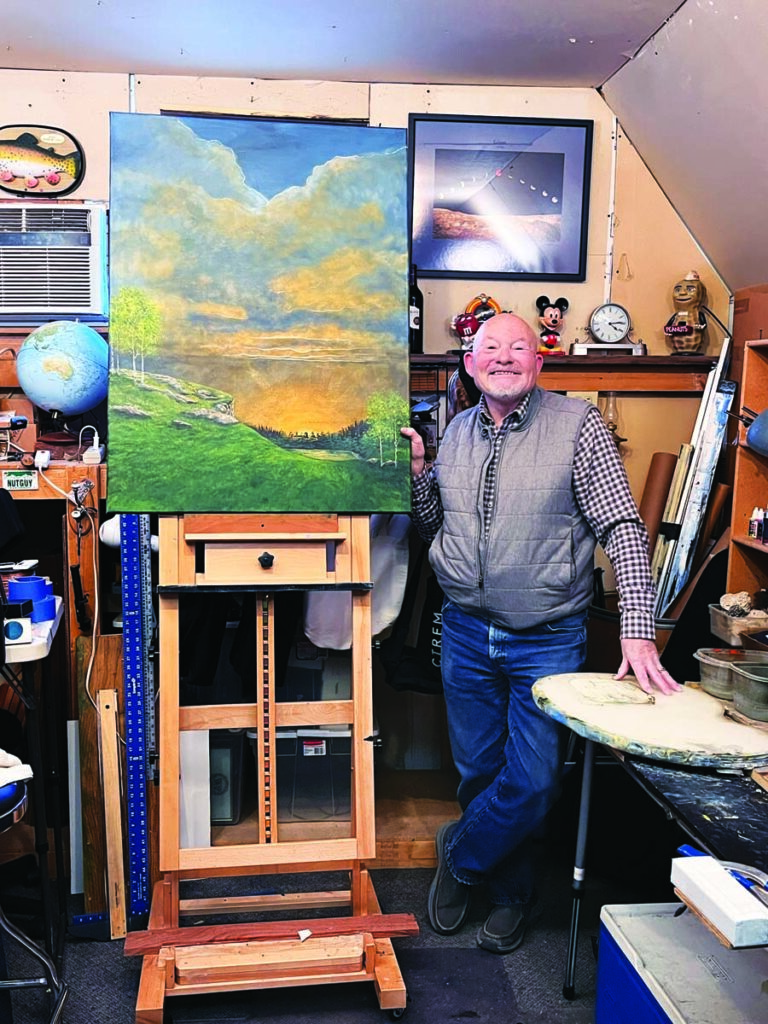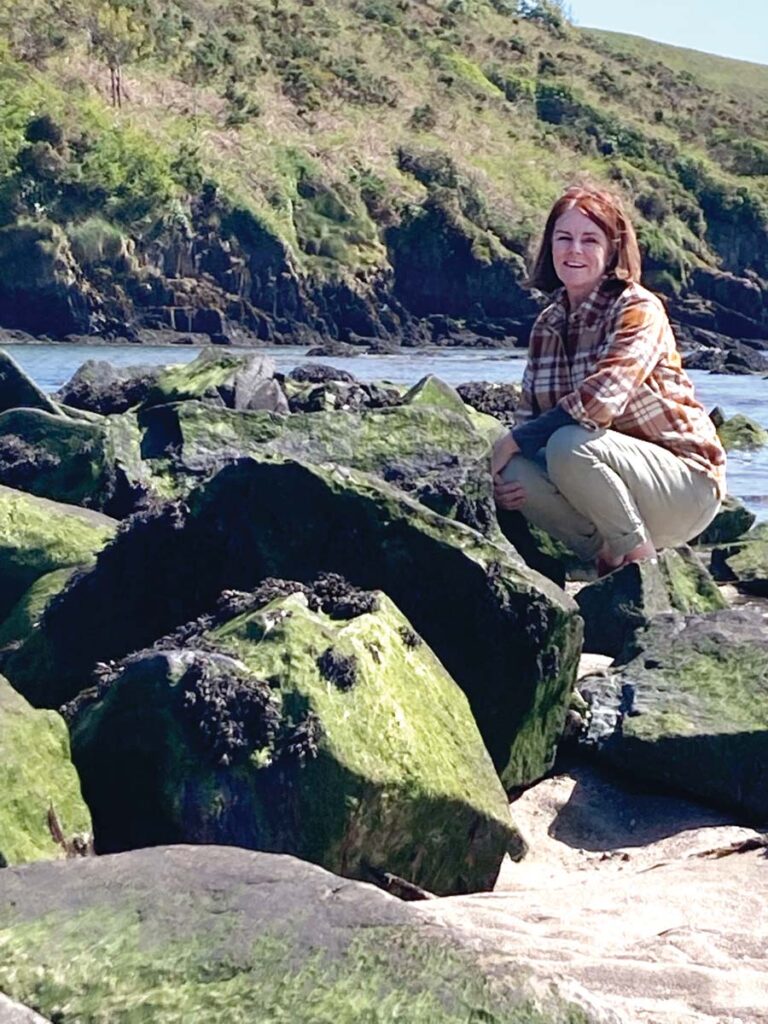When Intermountain Health Lutheran Hospital opens August 3 at 12911 W. 40th Ave., visitors will see a 110-piece hanging sculpture in the lobby. This dazzling work of art is one of more than 600 interior and exterior works created by about 50 local and Colorado artists for the hospital that replaces the Lutheran Medical Center on W. 38th Ave.
Lutheran President Andrea Burch said the team put in a lot of thought and intention when designing the hospital. “We had an opportunity to make sure that Lutheran was representative of the community that we are here to serve. One way we did that is through the art, by commissioning and partnering with local artists. They are from Wheat Ridge, Arvada, Lakewood, Denver and across the state.”
Jennifer Perlow, the director of art services at Design Studio Blue, an interior design firm specializing in commercial and wellness environments, curated this challenging project. The company was chosen by the Lutheran Hospital committee that oversaw the selection of art for the new hospital. Perlow has worked with other healthcare facilities to provide them with art.
“This curating project took many, many meetings over 18 months,” Perlow said. “I think we started in November 2022. We broke things into categories, starting with the more prominent pieces. A lot of planning happens to make sure the project is successful.”
Perlow said she worked with the Wheat Ridge Art League to get some of their artists in on this project.
“The 600 pieces we installed are everywhere,” Perlow said. “We have a piece in every patient room, corridors and waiting areas; some of the more public spaces have prominent artwork, like the suspended lobby sculpture. There is three-dimensional art as well as two dimensional art. There will be a bronze sculpture on a rooftop garden terrace.
One of the Wheat Ridge artists is Kevin Robb, the sculptor who created “Dancing in the Sun,” the contemporary, large-scale stainless steel sculpture outside the hospital.
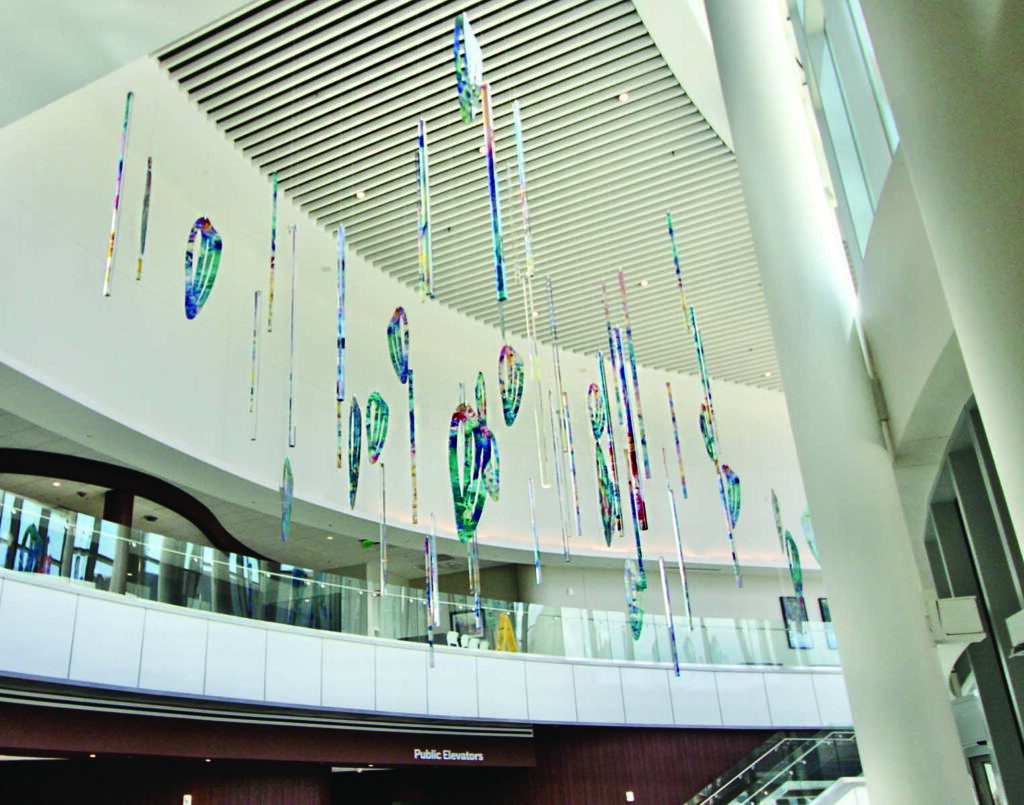
“We wanted a sculpture that was inspiring and tried to capture the mission of what we’re here to do,” Burch said. “Kevin Robb’s story was so special to us. Lutheran is known for our neuro program, and we provide stroke care to hundreds of patients every year. Kevin not only had a beautiful vision for what that sculpture would look like but was also a patient of Lutheran who lives in Wheat Ridge and is a stroke survivor.”
Perlow says the works were varied and expressed in different mediums and styles. “There could be an eighty-year-old farmer and an 18-year-old cheerleader on the same floor, and we didn’t want one person to feel like they didn’t like anything or another person to feel like they love everything. It’s tricky.
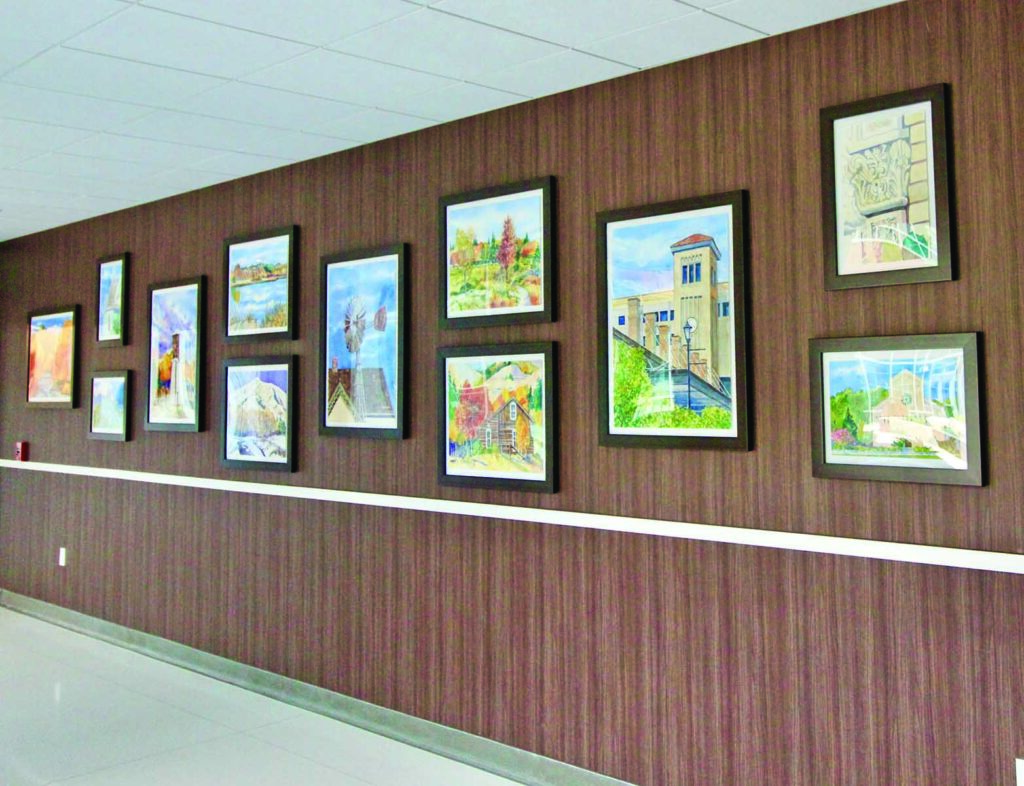
“Because art in healthcare is unique, there are particular criteria for art in a healthcare environment. There should be nothing dark or harsh or irritating, or that would make you dizzy. It should be uplifting. I tend toward saturated, bright tones—no dark shadows, no empty chairs. Sometimes aspens can be problematic, because they can look like they have eyeballs, and people don’t want to feel like they’re being watched.”
Burch says that studies have shown that providing color and natural landscape design and art can be healing and provide spaces for reflection. “[Art] can create a more soothing and healing environment for our patients and caregivers,” she said. “The practice of incorporating art into hospitals dates back to ancient times, with evidence of art and healing being connected as far back as the ancient Greeks.”
“It’s not only about creating a healing environment for patients—there are the staff, who are there all the time, and the visitors who also benefit from the art in the environment,” Perlow said. “Art changes the way you heal, visit and work.”
Burch said that in the 1950s and 1960s, a movement known as ‘arts in healthcare’ emerged, emphasizing the benefits of art in promoting healing, reducing stress, and improving the overall well-being of patients, staff, and visitors in healthcare environments. “This movement was influenced by research showing the positive effects of art on physical and psychological health, as well as the growing recognition of the importance of holistic approaches to healthcare,” Burch said.
Perlow says her skillset and sense for curating developed out of her love for being in the ceramic and crafts shop her mother ran when she was a kid. “My parents weren’t artsy at all,” she said. “We never went to museums; we had no art on our walls. My art career began as a gallerist in a contemporary crafts gallery that my husband and I turned into a fine art gallery.
“I totally believe in the power of art, and more importantly, I totally believe in the power of art in healthcare. I often work with organizations over and over and am completely passionate about the work I do. To me, it’s as much a calling as it is a job.
“There have been countless studies that show that art reduces anxiety and speeds healing; it creates joy, optimism and distraction. Can it be something seen for six years and still be enjoyed? This is the thought that I put into the curating process.”

